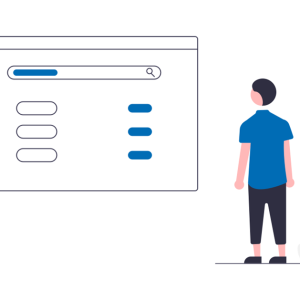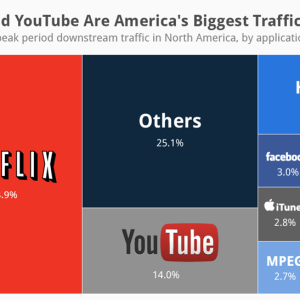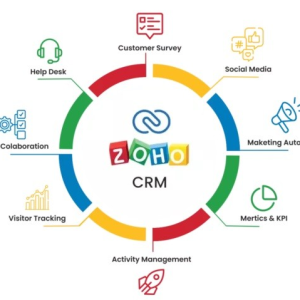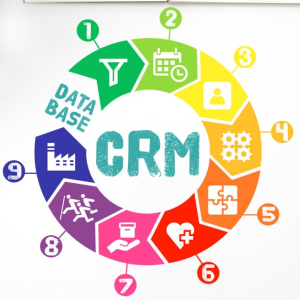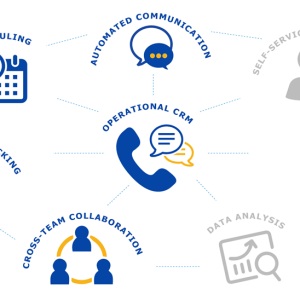Introduction
Permalinks are an important part of SEO and can be used to your advantage if you know how to use them correctly. In this comprehensive guide, we’ll cover everything from what a permalink is to canonical URLs and 301 redirects. So whether you’re just starting in SEO or you’re looking for ways to improve your website’s ranking, this guide is for you.
What Is Permalink SEO?

A permalink is a web address that points to a specific post or page on a website. Permalinks are usually assigned automatically by the content management system (CMS) and consist of the post’s title and some of the post’s metadata, such as the date published.
Permalinks play an important role in SEO because they help search engines understand what your website is about and how it’s organized. They also play a role in how users navigate your website and can be used to improve the user experience.
Permalink Structure
The structure of your permalink can have a significant impact on your website’s SEO. The most important thing to keep in mind when choosing a permalink structure is to make sure it is easy for both users and search engines to understand.
For example, a permalink structure that includes the date of the post is often considered to be bad for SEO because it makes it more difficult for search engines to understand the content of the post. Additionally, users may be less likely to click on a link if they can’t tell what the page is about from the URL.
A good permalink structure should be short, descriptive, and easy to read. It should also include keywords that are relevant to the post.
Some common permalink structures include:
Post name: /%postname%/
Category and post name: /%category%/%postname%/
Post ID: /%post_id%/
Let us say, you have a website “yourwebsite.com” with the post “how-to-improve-your-SEO”
The permalink for this post would be “yourwebsite.com/how-to-improve-your-SEO”.
If you change the permalink structure to include the date, the permalink would be “yourwebsite.com/2018/09/how-to-improve-your-SEO”.
This makes it more difficult for both users and search engines to understand the content of the post. The user may think that the post is outdated and not click on it, and the search engine may have difficulty indexing the post.
It’s important to note that you can change your permalink structure at any time, but if you do so, you will need to set up a 301 redirect from the old URLs to the new ones.
Changing your permalink structure can have a significant impact on your website’s traffic, so it’s important to choose a structure that is both user-friendly and SEO-friendly.
301 Redirect
As we have mentioned before, 301 redirect is useful when you change your permalink structure.
A 301 redirect is a permanent redirect from one URL to another. When a user or search engine tries to access the old URL, they are automatically redirected to the new URL.
301 redirects are important for SEO because they help preserve your website’s ranking and traffic. If you do not set up a 301 redirect, users and search engines will be directed to a 404 error page, which can hurt your website’s ranking.
How to Choose a Permalink Structure?
There is no perfect permalink structure that will work for every website. The best way to choose a permalink structure is to experiment with different options and see what works best for your website.
You can also use Google’s PageSpeed Insights tool to get recommendations on how to improve your website’s performance.
Once you’ve chosen a permalink structure, it’s important to implement it consistently across your website. Inconsistent permalinks can confuse both users and search engines and may result in lower rankings.
Permalinks and Canonical URLs
In addition to choosing a permalink structure that is user-friendly and SEO-friendly, you should also make sure your website’s canonical URL is set up correctly.
A canonical URL is the preferred version of a web page. It is the version that you want people to see when they access your website.
For example, let’s say you have a website with both a “www” and a non-www version. The www version would be the canonical URL.
If someone tries to access the non-www version, they should be redirected to the www version. This is important because search engines may view the www and non-www versions as two separate websites, which can hurt your website’s ranking.
You can set up a canonical URL in your website’s code or use a plugin like Yoast SEO.
Permalinks and SEO: How do Permalinks affect SEO?
Permalinks play a huge role in SEO. They help search engines understand the content of your website and can be used to improve your website’s ranking.
When setting up your permalinks, it’s important to choose a structure that is both user-friendly and SEO-friendly. You should also make sure your website’s canonical URL is set up correctly. Improperly configured permalinks can hurt your website’s ranking and traffic. There are several ways in which permalinks affect SEO:
1. Permalinks help search engines understand the content of your website
By choosing a permalink structure that is user-friendly and SEO-friendly, you can help search engines understand the content of your website. This can be beneficial for your website’s ranking.
2. Permalinks can be used to improve your website’s ranking
If you choose a permalink structure that includes keywords, you can use those keywords to improve your website’s ranking.
3. Permalinks can be used to create keyword-rich URLs
Using keywords in your permalinks can help create keyword-rich URLs, which are beneficial for SEO.
4. Permalinks can be used to redirect users and search engines to the correct URL
If you change your permalink structure, you can use a 301 redirect to redirect users and search engines to the new URL. This is important for preserving your website’s ranking and traffic.
5. Incorrectly configured permalinks can hurt your website’s ranking
If your permalinks are not configured correctly, they can hurt your website’s ranking. This is why it’s important to choose a permalink structure that is both user-friendly and SEO-friendly.
6. Canonical URLs help ensure that search engines index the correct version of your website
If you have a website with both a www and a non-www version, you should set up a canonical URL so that search engines index the correct version of your website. This is important for preserving your website’s ranking.
7. 301 redirects are important for SEO because they help preserve your website’s ranking and traffic
If you change your permalink structure, you should use a 301 redirect to redirect users and search engines to the new URL. This is important for preserving your website’s ranking and traffic.
8. Permalinks can be used to share your content on social media
If you include social media buttons on your website, you can use permalinks to share your content on social media. This can be beneficial for your website’s traffic and SEO.
9. Permalinks can be used to track the performance of your website’s content
If you use Google Analytics, you can use permalinks to track the performance of your website’s content. This information can help improve your website’s SEO.
10. Permalinks can be used to create an XML sitemap
An XML sitemap is a file that contains a list of all the pages on your website. You can use a plugin like Yoast SEO to automatically generate an XML sitemap for your website. This can be beneficial for your website’s SEO.
The importance of permalinks cannot be overstated. They are the backbone of your SEO strategy and if you want a user-friendly website with high rankings, then they must be in place! Make sure to also check out this article about setting up Canonical URLs correctly or using 301 redirects on websites for more help on how best to accomplish these things from within WordPress itself without having an IT degree handy at all times.
The Difference Between An URL & A Permalink
Every website has a unique address so that people (and search engines) can find it. This is what’s known as the website’s URL, or Uniform Resource Locator. The URL consists of several parts, including the protocol (HTTP:// or HTTPS://), the domain name (www.example.com), and the path to the specific page (/page-1).
A permalink is a specific URL that points to a single post or page on a website. Permalinks are permanent, meaning they don’t change over time. This is in contrast to a URL, which can change if the website’s structure changes. Let us discuss a few other differences between URLs and permalinks:
1. A URL can point to any resource on the Internet, while a permalink can only point to a specific post or page on a website.
2. A URL can be changed at any time, while a permalink is permanent.
3. A URL can be dynamic (generated by a script), while a permalink is always static.
4. A URL can contain query parameters (such as ?page=1), while a permalink cannot.
So, either change your permalinks to match the new URL structure or redirect users and search engines to the new URL. This is important for preserving your website’s ranking and traffic.
How To Maximize Your SEO with Permalinks
Maximizing your SEO with permalinks is all about using the right keywords and phrases. Here are a few tips for doing so:
1. Use keywords in your permalinks
Keywords are important for SEO, so it’s important to include them in your permalinks. However, you should only use keywords that are relevant to the specific post or page. Stuffing your permalinks with keywords will not only hurt your SEO, but it will also make your permalinks look spammy.
2. Use phrases in your permalinks
In addition to keywords, you should also use phrases in your permalinks. Phrases are especially important for long-tail keywords. Long-tail keywords are longer and more specific than short-tail keywords. For example, “SEO” is a short-tail keyword, while “how to optimize your website for SEO” is a long-tail keyword.
3. Use dashes (-) to separate words in your permalinks
When you use words in your permalinks, you should separate them with dashes. Dashes are more user-friendly than underscores (_). They’re also more search engine friendly.
4. Keep your permalinks short and sweet
Your permalinks should be short and sweet. Long permalinks are more likely to be truncated by search engines. They’re also more likely to be changed by website administrators.
5. Use descriptive permalinks
Your permalinks should be descriptive. This is especially important for post titles. A descriptive permalink will give users and search engines a good idea of what the post is about.
6. Avoid using stop words in your permalinks
Stop words are words that are commonly used, such as “a,” “an,” “the,” and “of.” While stop words are important for readability, they’re not so important for SEO. In fact, including stop words in your permalinks can hurt your SEO.
7. Maintain a consistent permalink structure
It’s important to maintain a consistent permalink structure. If you change your permalink structure, you’ll need to set up redirects. Redirects are used to map old URLs to new URLs. This is important for preserving your website’s ranking and traffic.
8. Use HTTPS when possible
Whenever possible, you should use HTTPS instead of HTTP. HTTPS is more secure and it’s better for SEO.
9. Use canonical URLs
Canonical URLs are used to specify the preferred version of a page. They’re especially important for pages with multiple versions (such as http://example.com, http://www.example.com, and https://www.example.com).
10. Use 301 redirects
301 redirects are used to map old URLs to new URLs. This is important for preserving your website’s ranking and traffic.
When it comes to SEO, permalinks are an often overlooked but crucial element. By following the tips above, you can use permalinks to your advantage and maximize your website’s SEO.
How to Make Permalink SEO

Now, this is the most awaited part, how to make a permalink. It is pretty simple and easy. We’ll now explore some of the different options for your posts and pages.
Default Permalink Structure
WordPress offers you the ability to create a permalink for every post and page on your website. The default permalink structure is:
http://example.com/?p=N
Where N is the post or page ID.
This option has very poor SEO value as it does not include any keywords in the URL.
The Day and Name Permalink Structure
A much better option for SEO is the day and name permalink structure. This can be enabled by going to Settings » Permalinks and selecting Day and name from the Common settings section.
http://example.com/2017/01/01/post-name/
This permalink structure includes the date in the URL which can be beneficial for some sites. However, if you do not want to include the date in your permalinks, then you should use one of the following options.
The Month and Name Permalink Structure
If you do not want to include the date in your permalinks, then you can select the Month and name from the Common settings section.
http://example.com/2017/01/post-name/
The Numeric Permalink Structure
Another option is to use numbers in your permalinks. This can be enabled by selecting Numeric from the Common settings section.
http://example.com/archives/123
While this permalink structure does not include any keywords, it is the shortest and most user-friendly option. If you are running a very large website with thousands of posts, then this could be the best option for you.
The Post Name Permalink Structure
If you want to include keywords in your permalinks for better SEO, then you should select Post name from the Common settings section.
http://example.com/post-name/
This is the best permalink structure for most websites as it is short, user-friendly, and includes keywords.
Setting the URL Slug in a Post or Page
Now that you have selected your desired permalink structure, the next step is to specify the URL slug for each post and page.
The URL slug is the part of the URL that comes after the domain name. For example, in this post, the URL slug is “how-to-make-a-permalink.”
To set the URL slug for a post or page, simply edit the post or page and look for the Permalink field under the title.
You can then enter your desired URL slug. WordPress will automatically generate the permalink based on your selected permalink structure.
If you change the permalink structure after you have published posts or pages, then you will need to manually update the URL slugs for those posts and pages. Otherwise, you will end up with broken links on your website.
Creating a Custom Permalink Structure

If you want more control over your permalinks, then you can create a custom permalink structure. This can be done by going to Settings » Permalinks and selecting Custom Structure from the Common settings section.
You can then enter your desired permalink structure using the following tags:
%year% – The year of the post, four digits, for example, 2017
%monthnum% – The month of the post, for example, 01
%day% – The day of the post, for example, 01
%hour% – The hour of the post, for example, 15
%minute% – The minute of the post, for example, 43
%second% – The second of the post, for example, 33
%post_id% – The unique ID of the post, for example, 423
%postname% – The post slug, for example, how-to-make-a-permalink
%category% – The category slug, for example, SEO
%author% – The author slug, for example, john
You can use any combination of these tags to create your desired permalink structure. For example, you could use the following structure:
http://example.com/%year%/%monthnum%/%postname%/
This would create a permalink structure like this:
http://example.com/2017/01/how-to-make-a-permalink/
If you want to learn more about creating custom permalink structures, then please see our guide on how to create a custom permalink structure in WordPress.
Bonus tip:
If you are running a large website with thousands of posts, then you may want to consider using a shorter permalink structure such as numeric or day and name. This will help to keep your URLs short and user-friendly.
How to Change the Permalink Structure for an Existing WordPress Site

If you already have a WordPress site with an existing permalink structure, then you will need to set up redirects. Redirects are used to map old URLs to new URLs. This is important for preserving your website’s ranking and traffic.
There are two ways to set up redirects:
1. Use a plugin: There are many plugins available that can help you to set up redirects. We recommend using the Redirection plugin.
2. Set up redirects manually: You can also set up redirects manually by adding code to your .htaccess file. This method is more complex and should only be used by experienced users.
Once you have set up your redirects, you will need to update your permalink structure. To do this, go to Settings » Permalinks and select the desired permalink structure.
Conclusion
Permalinks are an important element of SEO and can be used to improve your website’s ranking and traffic. By following the tips in this guide, you can use permalinks to your advantage and maximize your website’s SEO.
If you are a company just getting started, and you need help, hiring an agency can be a great way to get help with your SEO and other digital marketing needs. Check out our services at 12 channels or contact us today to learn more.


